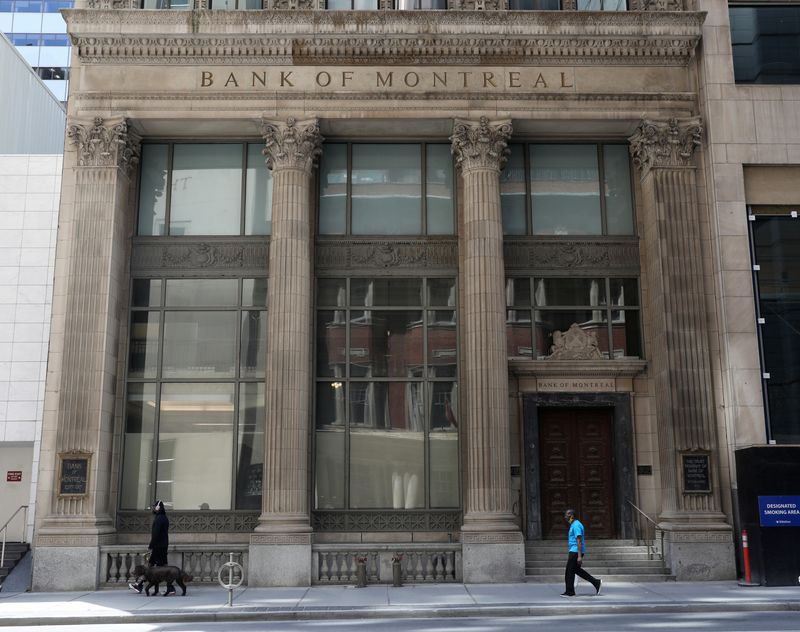Canadian banks brace for trade uncertainty with more loan loss provisions in second quarter
By Nivedita Balu
TORONTO (Reuters) - Canada's big banks are expected to have shored up loan loss reserves in the second quarter, with four of the big six banks putting aside over C$1 billion to shield against potential loan defaults in a time of trade uncertainty.
Large loan loss provisions take away from earning potential, a problem the banks have faced in the past few years as a high interest rate environment made it increasingly more difficult for consumers and businesses to repay loans and borrow money.
Two of the big six Canadian banks - Bank of Montreal and TD Bank - are expected to show a fall in profit while for the other four banks earnings are expected to grow 7.9% on average, according to Reuters calculations.
A series of rate cuts by the central bank had left investors hopeful of a better lending environment, but U.S. President Donald Trump's tariff policies have shocked financial markets and sent a wave of uncertainty through the global economy.
"Q2 was a particularly tumultuous quarter as changing messages, and policy, from the U.S. administration on tariffs and trade have made forecasting especially challenging," CIBC analyst Paul Holden wrote.
Themes for the quarter would be higher provisions, slow loan growth and lower investment banking activity, Holden said.
Bay Street analysts expect allowances on regularly repaid loans to increase dramatically at the banks, when they report from May 22 to 29, reflecting the deterioration in the economic outlook from three months ago.
Provision for credit losses, a keenly watched metric that indicates the extent of souring loans, is expected to have grown between 14.5% and 79% at the big six Canadian banks in the second quarter ended April 30, according to LSEG data.
To be sure, the reserve builds are still lower in magnitude than during the COVID-19 pandemic, analysts said.
BMO is expected to show a 49% jump in provisions and report a 7.6% fall in earnings, according to analysts polled by LSEG. BMO is also expected to see some impact due to its large exposure to commercial lending as businesses pull back on expenses.
The only other bank expected to report a fall in profit is TD Bank, which has said it is making progress on its anti-money laundering remediation. Credit loss provisions at the bank are also expected to grow 22%.
Royal Bank of Canada, the country's largest lender, is likely to show the biggest rise in net income of 11% as it benefits from its scale and the absorption of HSBC Canada.
NOT ALL NEGATIVE
The capital markets business has been a boon for the banks at a time when personal and commercial banking segments faced challenges as it is largely fee-driven, keeping margins elevated.
Latest News
- Ivanhoe temporarily halts operations at Kakula mine due to seismic activity
- Josh Hawley blasts Allstate CEO for making $26M last year — while company can’t ‘afford’ to pay out claims
- EU Launches Antidumping Probe on Tires From China
- Why this activist investor wants big changes at billionaire media mogul Barry Diller's IAC
- Minerals 260 sells Aston lithium-REE project tenements to Delta Lithium
- XPeng Narrows Loss as Revenue Surges, Sees Another Strong Quarter Ahead













